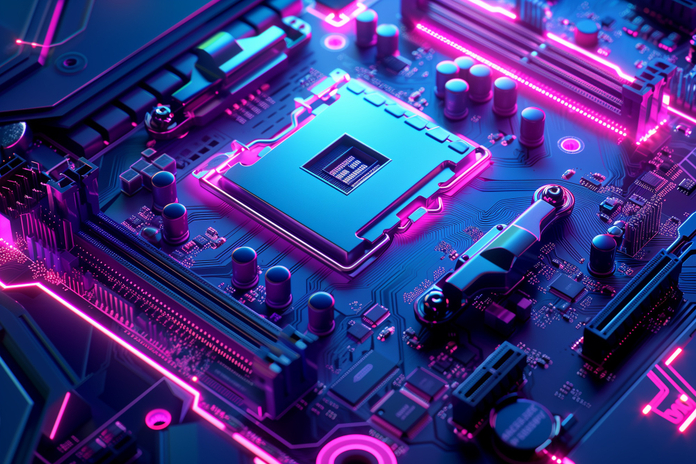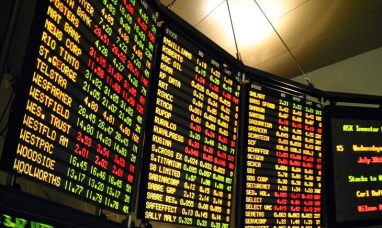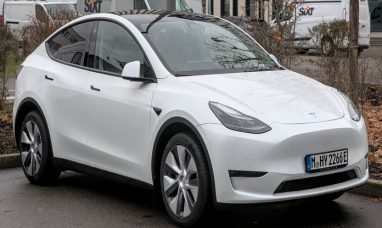Intel Corp. (NASDAQ:INTC) has staged one of the most surprising turnarounds of 2025. After losing over 60% of its value last year, Intel stock has more than doubled this year — a remarkable comeback few anticipated. The rebound has been fueled by new investment deals, strong government backing, and a renewed push into artificial intelligence (AI).
The U.S. government, now Intel’s largest shareholder with nearly a 10% stake, has become a key player in the company’s recovery. Investments from SoftBank Group (OTCMKTS:SFTBY) and Nvidia Corp. (NASDAQ:NVDA) have further strengthened sentiment and reinforced Intel’s credibility as it seeks to reestablish leadership in the semiconductor sector.
Intel’s Q3 Earnings Beat Expectations
Intel’s latest results confirmed that its turnaround has real momentum. The company reported $13.7 billion in revenue for Q3, up 3% year-over-year and well above Wall Street’s forecast of $13.14 billion. This marked the fourth consecutive quarter in which Intel exceeded its guidance.
Earnings per share came in at $0.23, surpassing expectations of breakeven. For Q4, Intel projects revenues between $12.8 billion and $13.8 billion, roughly in line with analyst estimates. However, the company expects gross margins to decline to 36.5%, citing an unfavorable product mix and the ramp-up of its Core Ultra 3 processors.
Even so, investors welcomed the company’s consistent execution after years of disappointment.
AI Becomes Intel’s Growth Catalyst
During the Q3 earnings call, Intel’s leadership made it clear that AI will be central to its next growth phase. CFO David Zinsner highlighted the “critical role” CPUs play in AI data center workloads, particularly in inference tasks that process real-world applications of trained AI models.
Intel’s AI PC segment saw a 5% sequential revenue increase, and CEO Lip-Bu Tan noted that AI remains in its “early innings.” The company believes its next-generation chips, designed to optimize both AI and general computing workloads, will help it reclaim relevance in the high-performance computing space.
Improved Financial Strength Boosts Confidence
Beyond the numbers, Intel’s management struck a notably more confident tone. The company exited Q3 with over $30 billion in cash, excluding the pending $5 billion investment from Nvidia (NASDAQ:NVDA), expected to close in Q4. Intel also reduced its debt by $4.3 billion during the quarter and plans to continue deleveraging through 2026.
This strengthened balance sheet gives Intel the flexibility to invest heavily in AI infrastructure, advanced manufacturing, and customer acquisition for its foundry business, which remains a work in progress.
Challenges Remain for Intel’s Foundry Ambitions
Despite improvements, Intel’s foundry division continues to struggle with profitability. The segment posted a $2.3 billion operating loss in Q3 — down from $5.8 billion a year earlier but still concerning. Intel’s inability to secure major third-party customers has been a persistent obstacle.
However, with the White House pushing for onshore chip production, Intel could soon benefit from policy support and new contracts as the U.S. seeks to strengthen domestic semiconductor capacity.
Analyst Outlook and INTC Stock Forecast
Most Wall Street analysts remain cautious. Out of 41 analysts covering Intel (NASDAQ:INTC), only two currently rate it a “Buy.” However, several firms have raised their price targets following the strong Q3 report. Cantor Fitzgerald, for instance, increased its target from $24.80 to $45 while maintaining a “Neutral” rating.
Analysts agree that Intel’s turnaround is gaining traction, though execution risks remain. The company must prove that it can win major foundry clients and establish a meaningful foothold in the AI chip market, where competitors like Nvidia and Advanced Micro Devices (NASDAQ:AMD) are already dominant.
The Bottom Line on Intel Stock
Intel’s Q3 earnings show that its long-awaited recovery is finally taking shape. Backed by the U.S. government, massive AI investments, and a healthier balance sheet, Intel is positioning itself for a sustainable comeback.
Still, the company faces an uphill battle to regain technological leadership and restore market confidence fully. For investors, INTC remains a high-reward but high-risk play. Those already holding shares might consider trimming profits after recent gains, while long-term believers could see Intel’s AI and foundry ambitions as an opportunity worth watching closely.
Featured Image: Freepik









